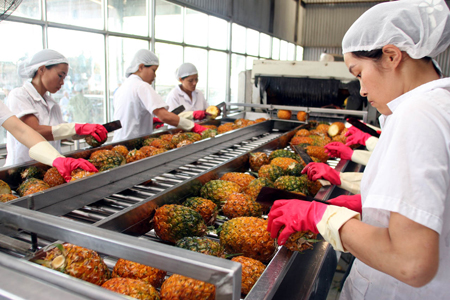|
Vietnamese farm produce enters the US from
China
Vietnamese
tropical fruits are sold all over the world, but they bear labels of origin
from other countries or enter markets via other countries.

Vietnamese longan is sold in Little Japan, a crowded
supermarket in
Fresh longan is sold at $6.99 a pound, or over $15 per kilo and VND330,000. Meanwhile, Vietnamese merchants sell longan at the Tan Thanh border gate in Lang Son province, from which longan is carried across border to Many Vietnamese visitors to Even dragonfruit, a Vietnamese popular export item, does not go the direct way to the Nguyen Minh, a Viet Kieu (overseas Vietnamese), the owner of a farm produce distribution business in the According to the Ministry of Agriculture and Rural Development (MARD), in 2014, However, 80 percent of Minh, noting that According to Minh, it takes at 17-20 days to bring dragonfruit from orchards in This means that With the most advanced technology, dragonfruit can maintain its quality within 30-35 days. Meanwhile, Chinese businesses can quicken the process of collecting fruits from farmers, processing and shipping, and they can deliver fruit quickly to ensure that the products are fresh. The same thing happens with However, cashew nut products available at Grand Central Market in NLD |
Thứ Sáu, 11 tháng 9, 2015
Đăng ký:
Đăng Nhận xét (Atom)
Không có nhận xét nào:
Đăng nhận xét